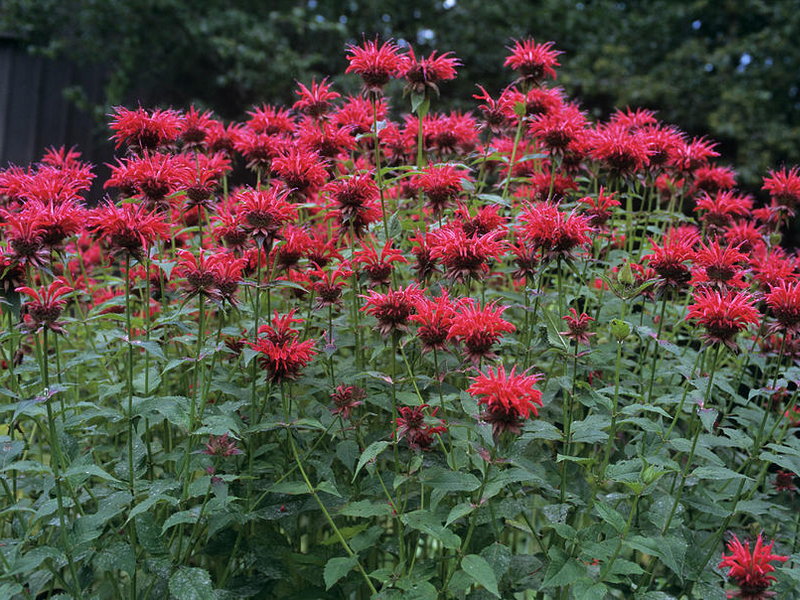Scarlet Beebalm
Monarda didyma
Click here to download a PDF of this plant information page (for printing).

Sun Exposure: Full Sun
Season of Interest: Spring, Summer
Bloom Time: June - September
Bloom Color: Red to Scarlet
Height: 24 to 48 in.
Spread: 24 to 36 in.
Spacing: 32 in.
Water Needs: Average
Maintenance: Very little
Soil Type: Clay, Loam
Soil pH: Acidic, Neutral
Soil Drainage: Well drained
Pests: None
Diseases: Powdery mildew
Wildlife: Bees, Butterflies, Hummingbirds

Description:
As suggested by its name, beebalm plants are known for attracting bees, butterflies, and hummingbirds. Even when the plant is not flowering, the seed heads will attract birds throughout the winter. Their vibrant flower heads are full of scarlet tubular flowers. Part of the mint family, bee balm has a square stem and quick-spreading underground rhizomes. Both the flower and the foliage are aromatic and often used in herbal medicine, teas, and in culinary applications. It is a quick grower and spreader and can be planted in the spring or fall. For more information see:
plants.ces.ncsu.edu/plants/monarda-didyma
Care and Growing Tips:
Beebalm is very easy to care for when provided with the right growing conditions. These plants do best with moist soil, plenty of sunshine, and consistent water. Good airflow is important to avoid problems with powdery mildew.
Full sunlight is best for beebalm plants. They can be grown in partial shade, particularly in areas with intense summer heat. However, plants grown in partial shade may develop a leggy, stretched look and will not flower as vigorously. Beebalm thrives in moist, well-draining, fertile soil and benefits from rich, organic matter, such as compost. These plants do not do well in soggy or extremely dry soils. If your garden conditions tend to be dry, try adding a layer of mulch to help retain the proper amount of moisture in the soil. Water them once the soil just feels dry. To prevent problems with powdery mildew, water at ground level and avoid getting the foliage wet.